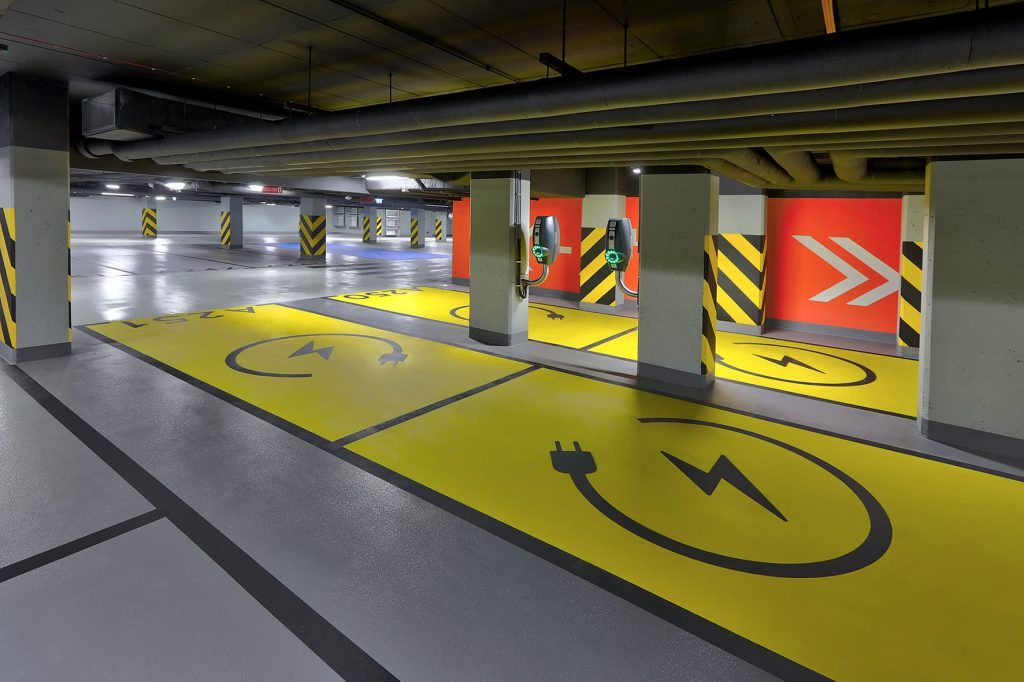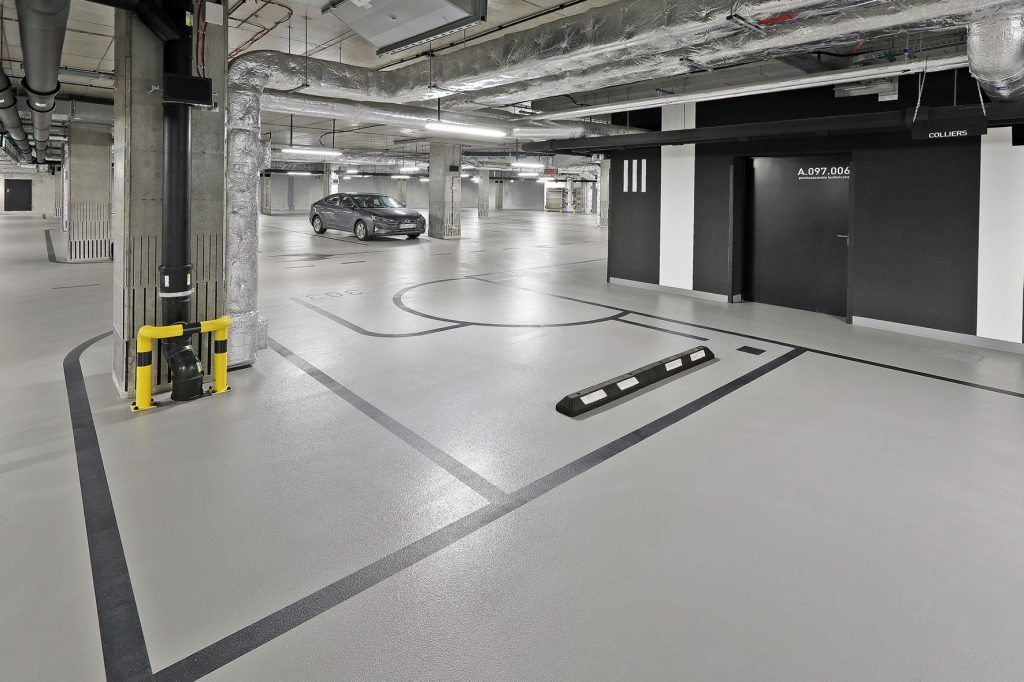Resin floors in parking lots intend to protect the structural elements of the building against damage caused by traffic loads and the impact of the external environment. Any scratches and cracks in the concrete substrate are a gateway for leaks that may contribute to corrosion of the reinforcement elements. Flexible coatings based on polyurethane resins, with a high ability to bridge cracks in the substrate, provide concrete surface protection against the effects of water, de-icing salts, detergents, fuels and other substances that may be present in the parking lot.
Experts from Flowcrete, a leading expert in resin flooring, explain:
- what does crack bridging mean,
- research methodology, and
- which flooring systems show the best properties in this regard.
The floor is the top layer most exposed to external factors and utility loads. For the resin coatings to maintain their protective functions for the substrate, it is necessary to keep the continuity of their surface. There are two ways to do this – limiting the formation of cracks in the concrete substrate, e.g. by specialist design solutions or applying coatings on the floor surface with high crack-bridging properties.
Crack-bridging properties, in other words – the ability to transfer or cover cracks, means that the coating remains undamaged and maintains continuity even when the scratching occurs in the substrate under the floor. There are two types of scratches – static and dynamic. Static scratches are those in which the crack forms in a continuous, linear manner. In the case of dynamic scratches – the cracks width changes periodically.
In the case of open car parks situated on top of the building, the specific weather conditions, including temperature, lead to the scratches formation. In winter, when the temperatures are lowest, concrete shrinks, and in summer, on hot days, it expands. Cracks in concrete occur, among others, due to rapid changes in the statics of the top, not the roofed floor slab. Flooring systems should be specified by architects based on the knowledge of the building’s character and also the loads and use conditions.
By the PN-EN 1504-2 standard on products and systems for the protection and repair of concrete structures, part 2 of which covers concrete surface protection systems, the crack bridging ability of resin systems should be tested under the procedure described in PN-EN 1062-7. The test results mean that no damage occurs on the floor surface under the conditions specified for a given class.
Method A under the PN-EN 1062-7 standard regards the examination of static cracks. It is based on stretching the sample with a constant, defined speed until the coating is damaged. The test results are defined in five grades from A1 to A5. Method B, which regards dynamic cracks, checks how the floor reacts to the cyclic crack opening. In this case, the result is described by classes from B1 to B4.2, with specific boundary conditions defined for each of them, including the change of crack opening depending on the load or the number of cycles. When comparing the properties of different flooring systems, one should always check the temperature and the number of cycles at which the test was carried out.
Among the various types of resin floors, the systems based on polyurethane resins have the highest crack-bridging capacity due to their high flexibility. For example, the Deckshield ED polyurethane flooring system, 2 mm thick, intended for outdoor use, in open parking lots, has been classified as A3 class (at -20°C), which means the ability to bridge scratches in concrete within the width of 0.5 to 1.25 mm. Such high flexibility and tear strength allow Deckshield ED coating to achieve the properties of much thicker flooring from other manufacturers.
On the other hand, the 1.5 mm-thick Deckshield ID system, used on intermediate floors and bottom slabs of underground and above-ground garages, can cover scratches in the A2 class (at -20oC), i.e. from 0.25 to 0.5 mm. In both cases, the coatings cover the standard cracks in the concrete substrate resulting from meeting the limit states of use of the structure.
The main advantage of flexible parking systems of high crack-bridging properties is that they keep tightness of the coating and the extension of the service life of the structure during the natural ageing and cracking of the substrate. At the same time, the higher quality (flexibility) of the offered products allows for the implementation of systems with a lower thickness, which leads to a reduction in the cost of parking.




Author
-

Tremco Construction Products Group, Tremco CPG in short, brings together leading European construction product brands, such as illbruck, Flowcrete, Nullifire, Tremco, Vandex, Dryvit and Nudura. The group employs over 1,400 people in Europe and over 6,500 people worldwide. It produces high-quality materials that meet various construction needs – from sealing, bonding and thermal insulation, to resin floors, fire protection, waterproofing, roof systems and Insulating Concrete Forms for wall construction. Tremco CPG offers: seamless resin floors by Flowcrete, including flooring systems for parking lots and garages and decorative epoxy resin terrazzo, innovative solutions for sealing joints of windows, doors and facades in energy-saving and passive buildings by illbruck, external wall insulation systems and facade materials by Dryvit, waterproofing for basements and foundations by Vandex, fireproof penetrations and fire-resistant intumescent coatings for the protection of structural steel by Nullifire and Insulating Concrete Forms by Nudura. Tremco CPG solutions respond to the challenges faced by the modern construction industry, such as energy efficiency, durability and sustainable development. Tremco CPG is a regional division of RPM International Inc., one of the world’s leading construction products companies for industrial and consumer segments, headquartered in Medina (Ohio, USA). www.tremcocpg.eu


























